Embarking on a trip to Albania offers a unique glimpse into a part of the Balkans not yet fully discovered by mass tourism. Within its borders, you’ll find Albania’s World Heritage Sites, treasures that are a testament to the nation’s rich history and natural beauty.
This guide introduces you to the UNESCO World Heritage Sites in Albania: the ancient city of Butrint, the Primeval Beech Forests of Europe, the historically rich Ohrid Region, and Berat.
Gjirokastra is another gem, showcasing Albania’s architectural marvels. Exploring these sites on a tour of Albania promises an unforgettable journey through time and nature, leaving you with lasting memories of its cultural and scenic splendor.
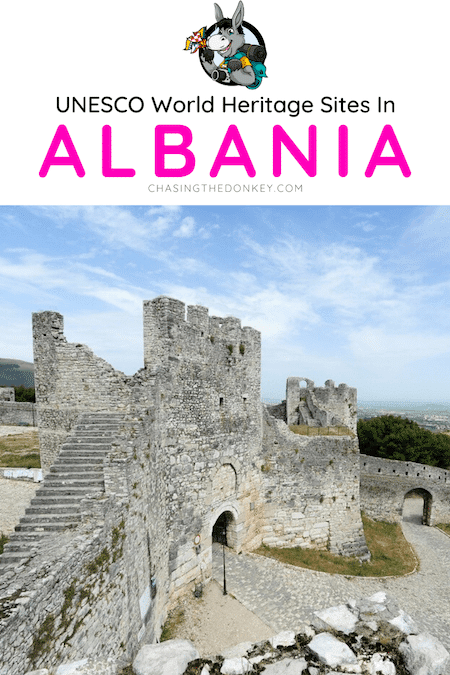
Albania proudly hosts four UNESCO World Heritage Sites, with an additional four locations eagerly waiting on the tentative list for their turn in the spotlight.
The journey began with Butrint, a cornerstone of Albania’s archaeological significance, which was officially recognized in 1992. Fast forward to 2019, and Albania celebrated its fourth inscription as the Natural and Cultural Heritage of the Ohrid Region, previously exclusive to North Macedonia, gracefully extended its boundaries to embrace Albania’s rich contributions.
This expansion not only highlighted the shared heritage between the two nations but also underscored Albania’s growing list of recognized sites on the global stage.
Skip Ahead To My Advice Here!
What Are The UNESCO World Heritage Sites In Albania
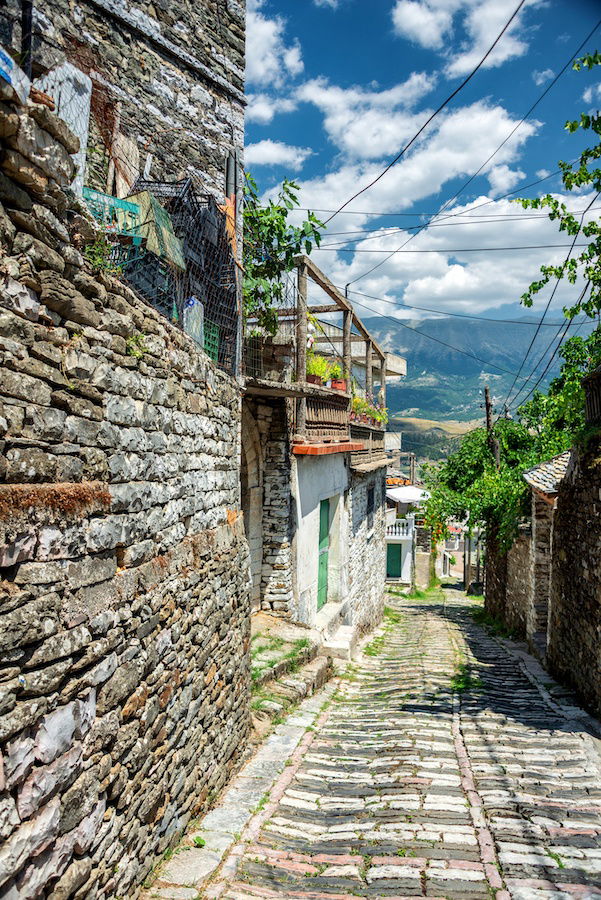
There are four Albania UNESCO World Heritage Sites, each offering a fantastic insight into this ancient country. They include historical and archaeological sites of global importance as well as remarkable natural areas.
Almost all of them are super-easy to get to since they are either within main towns or are a popular tourist or day trip destinations. While some World Heritage Sites in other countries might require extra planning and effort, you can easily visit all UNESCO sites in Albania on a fun road trip around the country.
1. Historic Centers Of Berat And Gjirokaster

People who enjoy exploring local culture and history will find this to be one of the top UNESCO World Heritage Sites in Albania. Additionally, the fact it consists of two separate historic towns gives you an excellent reason for a road trip!
Both are located in southern Albania’s beautiful hills, Berat and Gjirokastra. They are fortified cities that have been inhabited continuously since ancient times. They offer a deep insight into the evolution of architecture, art, religion, and culture in this part of Europe.
Berat
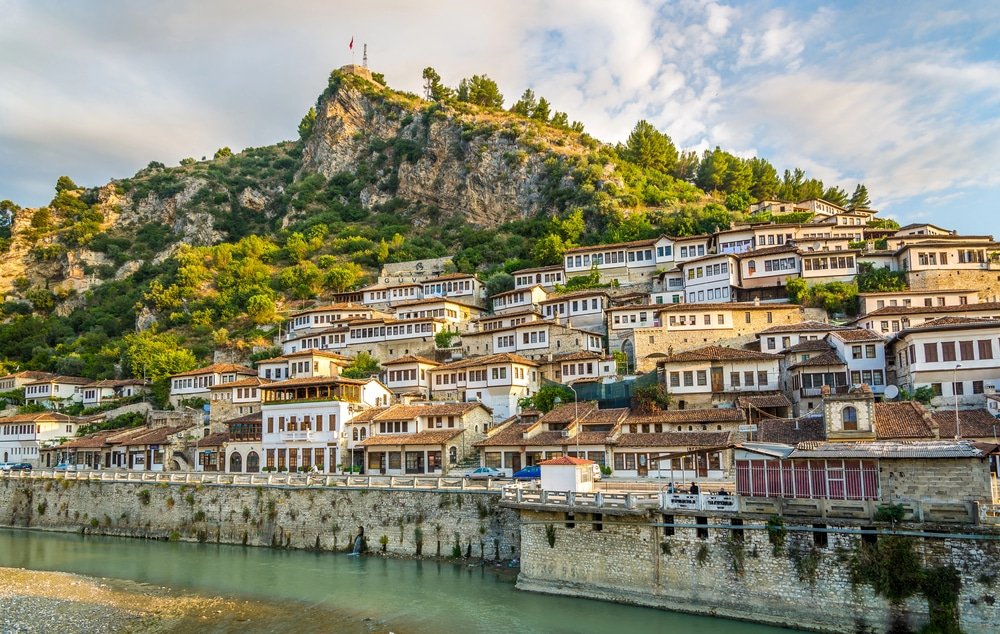
About one and a half hours south of Tirana, Berat is located on the banks of the Osum River in the southern half of Albania. It has nearly 60,000 people living in its boundaries, and many visit yearly to see the delicately preserved Ottoman architecture.
Berat is famously known as “the city of 1000 windows” and is one of Albania’s most incredible architectural gems. Visitors can see influences from cultures as varied as the Illyrians, Greeks, Romans, Byzantines, and Ottomans—spanning the city’s entire period of existence. Landmark buildings range from mosques and churches to palaces and strongholds.
The entire city was designated a UNESCO World Heritage Site in 2008 for being an extraordinarily beautiful and for great insight into what some describe as a mixing pot of architectural styles.
Berat’s history is easy to read just from a stroll around its Old Town. Many influences played a part in modern-day Berat, with art and murals to add to it.
The best view in the neighborhood of white homes with orange roofs can be found by climbing the hill to the famous castle. It all seems so symmetrical and planned.
The wild mountains that surround the area are even more magical at dusk. The local people would be glad to point you to the best spot to watch the sun go down if you are around for sunset.
There is plenty to see and do, so find yourself a hotel and explore for a few days! There is no shortage of excellent accommodations in Berat. Here are a few we think you would like that are all on an affordable budget.
Perhaps you might like to stay at one:
- Hotel Klea: Check out the hotel & prices here ↳
- Hotel Vila Aleksander: Check out the hotel & prices here ↳
- Hotel Mangalemi: Check out the hotel & prices here ↳
Gjirokastra
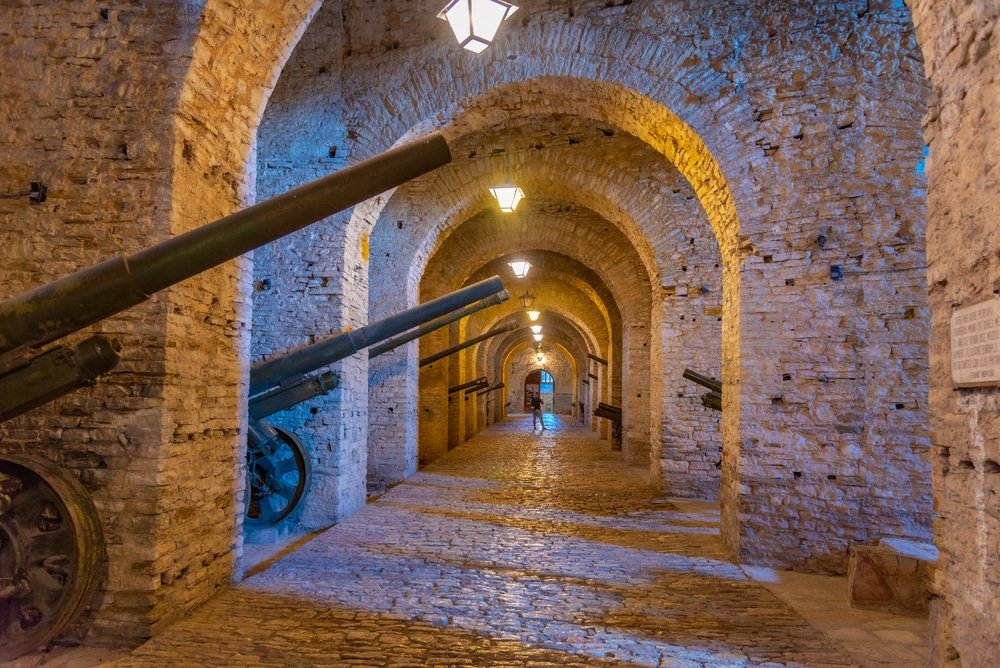
Gjirokastra, also known as Gjirokaster of the “City of Stone,” lies on the Drino River Valley slope between the Drino River and the Gjere Mountains.
The city is an ancient landscape dotted with characteristic stone buildings – a rare former Ottoman town, well-preserved at its former glory. As one of the country’s oldest towns, settled over 2,500 years ago, and this is one of those must-see places in Albania
It is nothing short of good fortune that this town is still the sight it is today. As the hometown of former communist leader Enver Hoxha, he made sure the town stayed in exceptional shape throughout his reign.
The cobblestone streets wind throughout the town, leading to its most renowned attraction: the Castle of Girokastra. This 13th-century citadel is the town’s centerpiece, surrounded by several turreted houses dating from the 1600s, a typical architectural feature of this area.
There are about 25,000 people who call Gjirokastër home, which is nearly as many tourists as it sees annually.
No matter which vantage point you view the city, whether from its streets, the valley below, or looking down upon the river, Gjirokastra is one of the most beautiful places in the Balkans.
Go ahead and stay for a night or two. Here are some of your best options in Gjirokastra when it comes to a place to rest your head at night:
- Hotel Lord Byron: Check out the hotel & prices here ↳
- Resort Kerculla: Check out the hotel & prices here ↳
- Hotel Old Bazaar 1790: Check out the hotel & prices here ↳
Brands We Use And Trust
2. Natural And Cultural Heritage Of The Ohrid Region
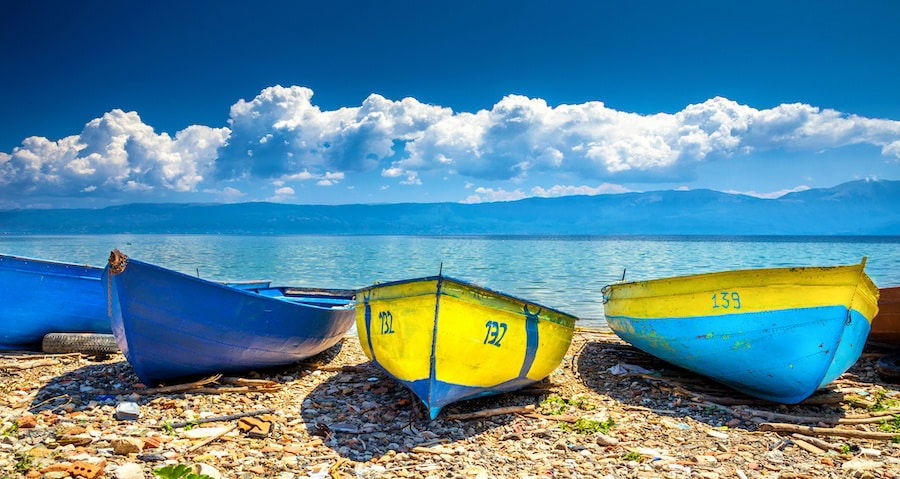
In 2019, the Natural and Cultural Heritage of the Ohrid Region site was extended to include the Albanian part of Lake Ohrid and its surroundings, making it the fourth UNESCO World Heritage Site in Albania.
Specifically, this Albania UNESCO site encompasses the part of Lake Ohrid located in Albania, the Lin Peninsula, and the small part of land connecting that peninsula to the border with Macedonia.
The Lin Peninsula, in particular, is significant because it’s the location of a 6th-century early Christian church. Additionally, three sites situated in the shallow waters near the lakeshore contain evidence of prehistoric dwellings.
Like the North Macedonian part of this UNESCO World Heritage Site in the Balkans, the Albanian part combines cultural and archaeological heritage and outstanding natural features. It’s an exceptionally rich environment in terms of flora and fauna—no fewer than 200 endemic species live in Lake Ohrid.
3. Butrint Archaeological Site
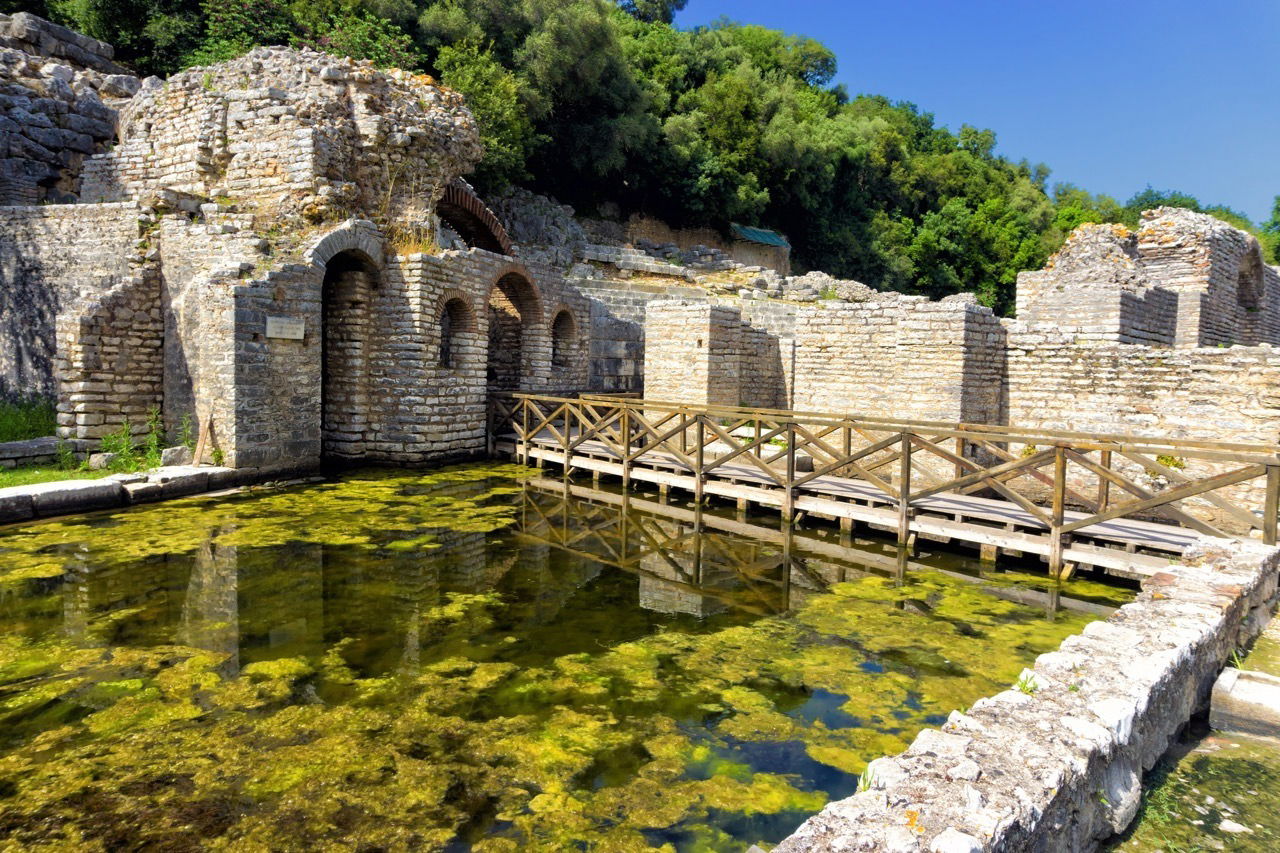
A major archaeological site in Albania, Butrint has been inhabited by people since prehistoric times. It used to be the location of a Greek colony and was also a thriving Roman town. Later on, it became part of the Byzantine Empire, was ruled by Venice for a while, and was eventually abandoned sometime during the late Middle Ages after a massive earthquake.
Nowadays, a magnificent collection of ruins remains, providing a look at each chapter in the town’s history. There are ancient Greek and Roman monuments, fortified walls, and an early Christian baptistery, among many other structures.
The oldest of the UNESCO World Heritage Sites in Albania, Butrint is also arguably the country’s most famous one. Located in the south of the country near the border with Greece, this world-class archaeological site lies along the Adriatic Sea coast about 14 kilometers south of Saranda, a popular beach resort.
4. Ancient And Primeval Beech Forests Of The Carpathians And Other Regions Of Europe
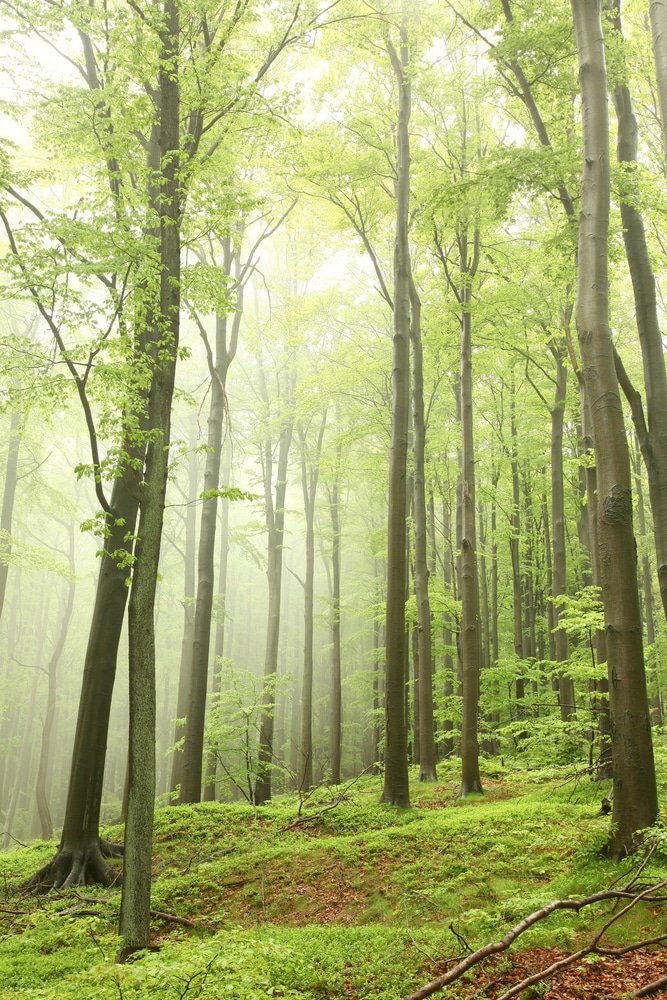
This huge World Heritage Site consists of various sites all over Europe, from Romania to Spain, from Bulgaria to Belgium, from Croatia to Slovenia, and from Austria to Albania. Spread across no fewer than twelve countries, it protects dozens of woodland areas dominated by Europe’s stunning beech forests.
There are two places in Albania where you can enjoy the gorgeous woodland scenery in a typical European beech forest.
In the very north of the country, on the border with Montenegro, lies Valbonë Valley, National Park. Not the entire park is part of this UNESCO World Heritage Site, though. If you’d like to focus on that particular part of the park, visit the Gashi River Nature Reserve.
The other second location of this UNESCO World Heritage Site in Albania is Shebenik-Jabblanicë National Park. The part of that park that’s designated World Heritage is the Rajca Nature Reserve.
What Are The Tentative UNESCO World Heritage Sites In Albania
The Ancient City Of Apollonia

This is where history buffs might just lose their minds. Apollonia, once a pivotal city in ancient Illyria, is so rich in history and ruins that it’s hard to believe it’s not already a UNESCO site.
On the tentative list since 1996, Apollonia offers ruins that span from Greek to Roman times, including an impressive amphitheater, ancient temples, and a library. Located near Fier, this site isn’t just about what’s on the ground; it’s about the stories and the civilizations that once thrived here. Whether you’re into ancient history or just looking for a place that makes you feel like you’ve stepped back in time, Apollonia delivers.
Les Tombes De La Basse Selca – Royal Tombs of Selca
Imagine stumbling upon an ancient burial site, not just any, but one that dates back to the Iron Age. That’s exactly what you get at Les Tombes de la Basse Selca.
This archaeological site is a fascinating window into the past, showcasing a series of monumental tombstones known as “stećci.” Why are they on the tentative list? Their historical significance and unique insight into ancient funerary practices make them invaluable.
Added to UNESCO’s tentative list in 1996, these tombs are a bit off the beaten path, located in the northern part of Albania. Even if you’re not an archaeology buff, the sheer age and mystery surrounding these tombs make them worth a visit.
Amphithéâtre De Durrës – Durrës Amphitheatre
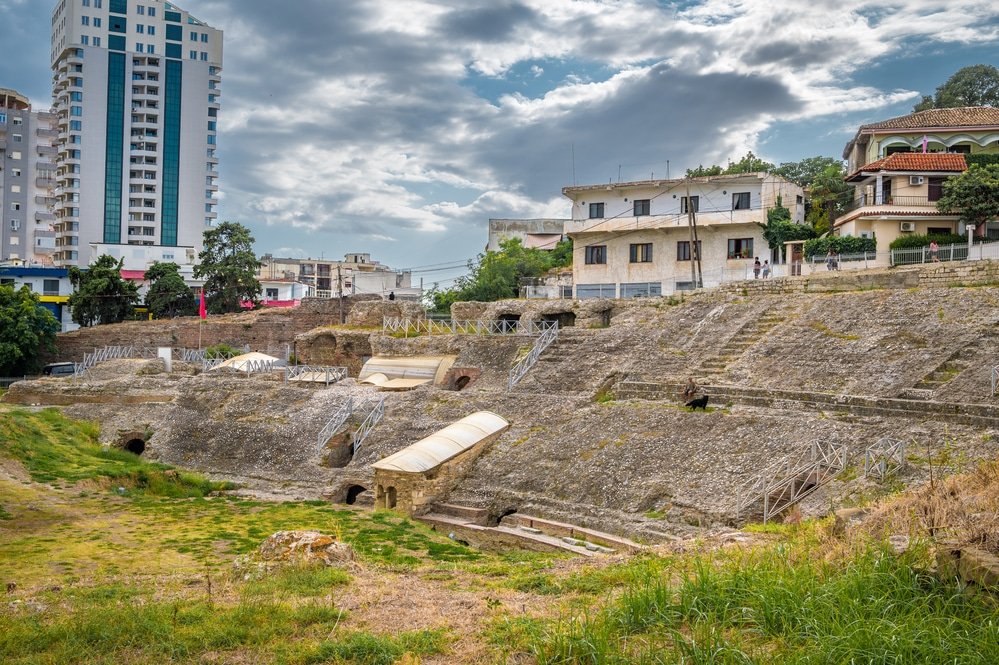
Standing as a testament to Durres’ ancient Roman heritage, this amphitheater isn’t just old; it’s one of the largest ever built in the Balkan region. Why hasn’t it clinched UNESCO status yet? It’s on the tentative list primarily because of its blend of historical importance and architectural marvel. Since 1996, it’s been waiting for its moment in the UNESCO spotlight.
Found in the heart of Durres, a visit offers a direct line to imagining the gladiatorial battles and performances that once captivated audiences here. It’s a must-see for anyone intrigued by Roman history or architecture.
The Castle Of Bashtova
If you’re keen on medieval fortifications, the Castle of Bashtova is right up your alley. This fortress, resting on the tentative list since 2013, is a relic of the 15th century, originally built to defend against Ottoman invasions. Its location near the Shkumbin River in central Albania makes it both strategic and scenic.
The castle’s robust walls and towers stand as a silent guardian of history, offering visitors a glimpse into Albania’s defensive past. While it might not be as polished as some tourist spots, its raw authenticity is precisely what makes it captivating.
Move This Adventure To Your Inbox & Get An Instant Freebie

No spam. Unsubscribe at any time.
UNESCO Sites In Albania FAQs
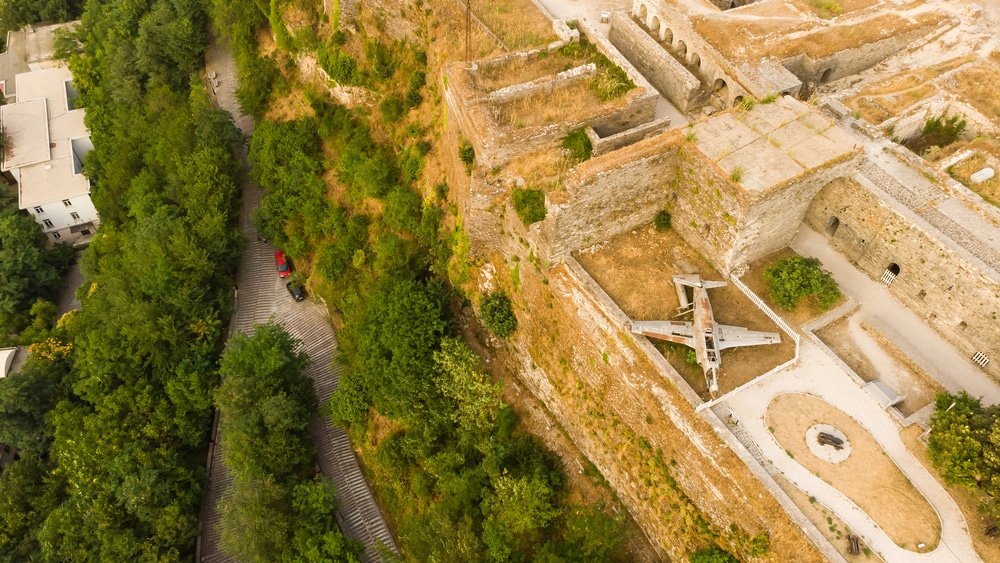
What are UNESCO sites?
The UNESCO sites in Albania are historical and cultural landmarks recognized by the UNESCO World Heritage Convention for their outstanding universal value.
How many UNESCO sites are there in Albania?
Albania currently has 4 UNESCO World Heritage Sites that showcase the rich history and heritage of the country.
What are some key features of the UNESCO sites in Albania?
The UNESCO sites in Albania include ancient ruins, historical centers, fortifications, and examples of Ottoman and Venetian architecture dating back to different periods in history.
Can you provide examples of the UNESCO sites in Albania?
Some examples of UNESCO sites in Albania are the ruins of Butrint, the historical centers of Berat and Gjirokastër, and the area around the town of Pogradec.
When were the UNESCO sites in Albania inscribed on the World Heritage List?
The UNESCO sites in Albania have been inscribed on the World Heritage List since 1979, highlighting their global cultural and historical significance.
What is the significance of the UNESCO sites in Albania?
The UNESCO sites in Albania represent a diverse range of historical periods, from the 4th century BC to the 20th century, showcasing the cultural interactions and architectural heritage of the region.
Are the UNESCO sites in Albania popular tourist destinations?
Yes, the UNESCO sites in Albania attract visitors interested in exploring ancient civilizations, medieval fortifications, and well-preserved examples of Venetian and Ottoman-style houses and architecture.
- 21 Ideas On Where To Go In Albania
- Things To Do, Eat, And More Along The Albanian Riviera
- The Must-See Sights In Albania With Kids
- Things To Do In Albania
- Best Time To Visit Albania
- Explore The City Of Tirana, Albania
- Hotels Along The Albanian Riviera
- Things To Do In Sarande
- Rent A Car In Sarande
- Our Top Picks For Albania Accommodation
- Things To See And Do In Albania In The Winter
- Berat Or Gjirokaster – Comparison Guide
- Is Durres Worth Visiting?


THERE IS ONE MISTAKE HERE ON THIS PARAGRAPH
Article Says : “A major archaeological site in Albania, Butrint has been inhabited by people since prehistoric times. It used to be the location of a Greek colony and was also a thriving Roman town. Later on, it became part of the Byzantine Empire, was ruled by Venice for a while, and was eventually abandoned sometime during the late Middle Ages after a massive earthquake.”
IT SHOULD SAY:
” It used to be the location of a ILLYRIAN TRIBES ( MOLLOSËT & THESPROTËT.
NOT
“It used to be the location of a Greek colony”. It was controlled by invading Hellenic People for some time but it belonged to ILLYRIA.
ILLYRIA used to stretch from borders of Austria from the North and Yannena(Greece) to the south. TO MANY BATTLES HAVR BEEN FOUGHT AND EMPIRES HAVE MET ON THESE LANDS and to this day there are conflicts. ILLYRIAN EMPIRE, ROMAN EMPIRE, BYZANTINE EMPIRE, BULGARIAN EMPIRE AND OTTOMAN EMPIRE.
borders have changed and Illyrians have been assimilated by the arrival of slavic tribes to balkans in 6AD the only surviving Illyrians tribes are Albanoi (Today Albanians) & Dardanians (Today Kosovo Dardans/Albanians)
Hi
My wife and I are planning to be in Albania (Tirana) around the 29th August this year. We are keen to explore tours of about a weeks duration focusing on the UNESCO sites.
Can you provide some suggested itineraries and associated costing please?
Thanks
Kevin
Albanians have a fake made up story that they are descendants of Illyrians and Dardanians so that they can try to prove that they are indigenous to this region, which they are not! Also, they educate themselves with fake history propaganda on Wikipedia!
It’s impossible to get around a visit so many places Albania has to offer without having a car. Renting a car is something you can do as there are many local renters who will offer you a good car for a cheap prices